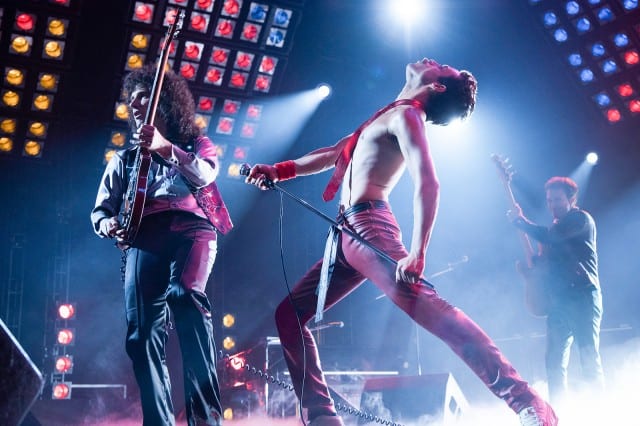
By Daniel Dunaief
The film “Bohemian Rhapsody” is far better than the critics suggest, while “Green Book” isn’t as deep or powerful as it could be. After watching four movies recently, including “Aquaman” and “Mary Poppins Returns,” I want to share my reactions to each of these films.
Featuring my favorite superhero, “Aquaman” had the opportunity to inspire and demoralize me at the same time. The movie was going to be a CGI (computer-generated imagery) extravaganza, with numerous impossible-to-imagine scenes filmed underwater. I don’t generally crave spectacular and splashy visuals, especially if they are designed to compensate for a weak script or disappointing acting.
Unfortunately for the water hero, the CGI was considerably more polished than the script, with attempts at humorous dialogue that were so underwhelming that it was tempting to urge the actors to stop talking and continue to swim through the scenery. Nonetheless, the movie did have its escapist and captivating elements. Perhaps the best way to enjoy a movie like this is not to think too much and to appreciate the ride. The spectacular visual spectacle almost merited the effort of seeing the movie on a large screen, instead of waiting for it to appear on a movie channel in a few months time.
Making a “Mary Poppins” sequel immediately asks the film to build on its successes, while introducing something new and engaging in its own right. The film succeeded on the first front, but fell a bit short, at least for me, on the second. Emily Blunt captured Mary’s supreme self-confidence, and magic magnificently. She took an iconic character owned by Julie Andrews and made it her own. The animated sequences, which were more lavish and extended than in the original, helped the movie create its own indelible images. The lyrics to the songs, however, weren’t quite as memorable as the original, at least for me.
“Green Book” maneuvers through the societal challenges that arise from a white driver who is transporting an African-American pianist, Don Shirley, through the South for performances in 1962. The movie feels important because it addresses bias and stereotypes during a period when the struggle for Civil Rights took root. Set against racial tensions, the film addresses the developing relationship between its two stars and has moments of tenderness and transformation for the duo at the heart of the story. It also addresses the remarkable contradiction between white society eager to enjoy the talents of an African-American entertainer and the inability of that same audience to respect the person as an equal.
Still, the movie felt like it could have been so much more. The film shows details of the life story of the driver Tony Lip, played with his usual energy and passion by Viggo Mortensen. Shirley, portrayed by Mahershala Ali, tells the background of his life. The movie would have benefited from a deeper and better understanding of Shirley’s life, which, some members of his family have suggested was different from the portrayal in the film.
That leads me to “Bohemian Rhapsody.” I didn’t know a great deal about the musicians or their backstory. For me, the film was an enormous hit for two reasons: Rami Malek, who played lead singer Freddie Mercury, and the music itself. Malek embodied the energy, spirit, and unique character that was Mercury, parading around the stage, commanding every scene and blending bravado with an underlying vulnerability. The story doesn’t turn Mercury into a saint but, rather, shares his complicated life.
For fans of Queen’s music, the movie is a satisfying compilation of familiar hits that allow the legend of a wildly successful group to resonate.






